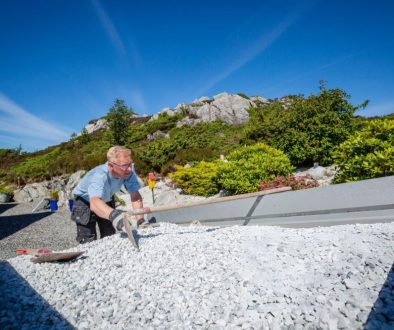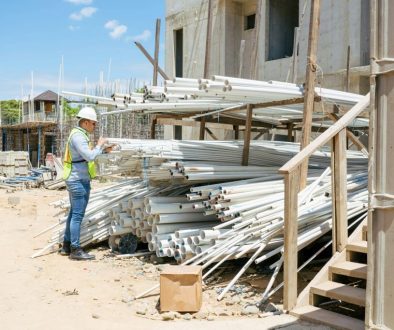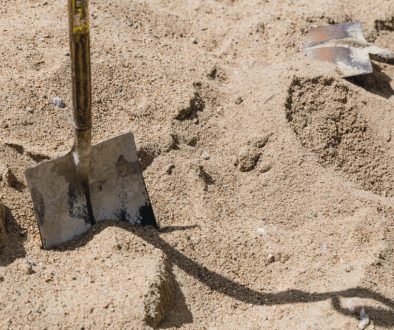Most building jobs need a solid base before anything else can go up. For that, many sites use hardcore MOT to create firm, level ground that can handle weight and weather. But it’s not always clear which type to use. MOT Type 1 is a common choice, although it’s not the only one. Different jobs call for different materials, and picking the right one can make a big difference when the weather starts to turn.
Cold and wet days in late autumn often add pressure to get groundwork done quickly and properly. A site in or near Cheshire with soft or soggy ground needs materials that stay firm and drain well. We’ve seen how the wrong sub-base can lead to more work later. That’s why we’re sharing when to use hardcore MOT, what sets MOT Type 1 apart, and how to know which works best for your job.
What Is Hardcore MOT and Why Does It Matter
Hardcore MOT refers to crushed material used to make up the foundation layer under tarmac, gravel, or paving. It’s usually made from broken bricks, concrete, or stone. The point is to create a layer that can support weight without shifting.
We often use it underneath:
• Roads and car parks
• Driveways or patios
• Footpaths and access roads
This layer does more than hold things up. It helps with drainage when the ground gets waterlogged, which is common around Cheshire in November. A rough patch of base may not seem like much, but once it’s smoothed and compacted, it supports everything that goes on top. Getting the right grade and mix helps avoid cracks, dips, and movement later on.
Hardcore isn’t one exact kind of material. It covers a few different types and sizes. If it’s loose, uneven, or full of gaps, it doesn’t work the way it should.
Our aggregates page lists recycled hardcore available from Enviro Skip Hire, produced from screened material and suitable for both domestic and commercial jobs around Staffordshire and Cheshire.
Understanding MOT Type 1
MOT Type 1 is one of the most reliable forms of hardcore. It’s approved for road work standards, which makes it popular on building sites. The name comes from the Ministry of Transport’s rules for road base layers.
MOT Type 1 usually includes:
• Crushed limestone, granite, or concrete
• Particles no bigger than 40mm
• Enough fine material (known as fines) to bind it all together
What makes it strong is how well it compacts. The fines fill in gaps between bigger chunks, which means fewer air pockets and better support once it’s tamped down. It handles heavy loads, doesn’t shift easily, and drains rainwater without turning soft.
We see MOT Type 1 used often under:
• Tarmac driveways
• Block paving patios
• Farm tracks and access lanes
Because it’s controlled and graded, the results are usually more consistent than with general hardcore.
The aggregates page on our site confirms we provide fully certified MOT Type 1 meeting the Department of Transport standard, making it a trusted option for car parks, roadways, or major groundwork.
When to Use Hardcore MOT vs MOT Type 1
MOT Type 1 is usually the better pick for driveways, car parks, and areas with heavy traffic. Its strength and drainage make it ideal when you need solid results fast. That’s especially handy when the ground starts holding water and weather delays work.
Hardcore MOT (not labelled as Type 1) might still work well if the job doesn’t need to meet transport specs. Think garden paths, shed bases, or boundaries where the pressure from above is light. If you’ve got plenty of drainage already in place or dry soil, a less strict grade of hardcore might do the job without problems.
Here’s a guideline to help decide:
• Use MOT Type 1 if there will be vehicles parked or driven over it
• Use it again when you need compact material underneath block paving or slabs
• Use general hardcore MOT if it’s only for walking or for filling uneven ground that won’t take heavy loads
Soil type can steer the choice too. Clay-heavy soil tends to hold water, so MOT Type 1 works better in those conditions. Sandy ground may be more forgiving, but you still want solid compaction.
Mistakes to Avoid When Choosing Sub-base Materials
We’ve seen a few common errors that slow jobs down. Mixing two types of sub-base material without planning can cause problems. The finer material can slip into gaps in the larger chunks, which stops it from staying solid when compacted.
Here are a few things to watch out for:
• Don’t mix MOT and loose rubble without checking the specs first
• Never leave thick layers un-compacted. A little time with a wacker plate now saves sinking or uneven patches later
• Build in layers. One deep dump of hardcore is harder to flatten evenly than two or three passes in thinner chunks
Late autumn builds often face soft, wet ground. That makes a well-laid sub-base more important than ever. Poor layers now could lead to movement, flooding, or standing water by mid-winter.
When the Foundations Are Right, the Rest Comes Easier
Good groundwork is often what keeps jobs moving through the rough months. A well-set layer of hardcore or MOT Type 1 gives builders a clean start and a dry space to work. That kind of stability helps avoid weather setbacks, especially through December and January.
Ending the year with solid, level sub-bases means less chance of cracks or shifting later. When the ground is sorted properly now, it’s easier to step into the next round of work once spring arrives. Skip the guesswork, pick the right mix, and everything that follows tends to fall into place.
Planning groundwork in Cheshire and want materials that stand up to wet and cold months? Choosing the right sub-base early makes all the difference. Whether you’re building a drive, path, or patio, we supply a reliable, consistent mix perfect for high-traffic areas and softer soils. You can rely on Enviro Skip Hire for expert advice before your project begins. Read more about our hardcore MOT and see how it fits into your next project, then give us a call to discuss what you need.




